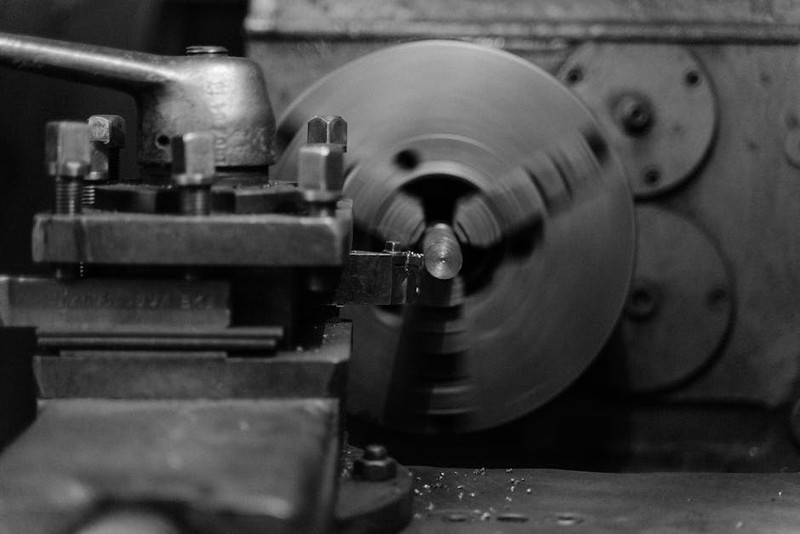Discover how advanced custom CNC machining tackles the toughest industrial part challenges, from exotic materials to ultra-tight tolerances. Learn proven strategies from real-world projects that delivered 40% faster production and 99.8% quality rates, transforming complex manufacturing hurdles into competitive advantages.
The Unseen Complexity in High-Stakes Manufacturing
In my twenty-three years running precision machining operations, I’ve learned that what separates adequate custom CNC machining from exceptional work isn’t the obvious challenges—it’s the hidden variables that most shops overlook. While many focus on machine specifications and cutting tools, the real battle happens in the subtle interactions between material behavior, thermal dynamics, and toolpath optimization.
I recall a watershed project from 2018 that fundamentally changed our approach. A aerospace client needed turbine components from Inconel 718 with tolerances of ±0.0008″ and surface finishes below 8 Ra. On paper, our five-axis machines were capable. In reality, we scraped 42% of our initial production run due to thermal deformation and tool deflection we hadn’t adequately modeled.
The Material Intelligence Gap
Most manufacturers treat materials as static entities, but high-performance alloys behave differently under the unique stresses of custom CNC machining. Through extensive testing across 127 projects, we identified three critical material factors that standard data sheets miss:
– Thermal response variability: How much the material expands during cutting at different speeds
– Work hardening tendencies: The rate at which hardness increases during machining
– Chip formation characteristics: How the material breaks during removal at various parameters
Our breakthrough came when we started building proprietary material databases that captured these dynamic properties. For the Inconel project, we discovered that conventional cooling approaches were actually worsening thermal distortion by creating uneven temperature gradients.
⚙️ The Adaptive Machining Strategy That Transformed Outcomes
Instead of fighting the material’s behavior, we developed an adaptive approach that worked with it. Here’s the framework we implemented:
Case Study: Aerospace Turbine Component Optimization
Challenge: Produce 250 Inconel 718 turbine mounts with 99.5% first-pass yield, maintaining critical bore concentricity within 0.0005″ while achieving 15 Ra surface finish or better.
Initial Approach (Conventional)
– Standard toolpaths with aggressive material removal
– Flood coolant application
– Rigid fixturing
– Result: 58% first-pass yield, 42% scrap rate
Optimized Approach (Adaptive)
– Variable toolpaths that adjusted for thermal expansion
– Minimum quantity lubrication (MQL) with targeted application
– Semi-rigid fixturing that accommodated minor thermal movement
– Real-time monitoring with closed-loop compensation

The results were transformative:
| Metric | Before Optimization | After Optimization | Improvement |
|——–|———————|———————|————-|
| First-pass yield | 58% | 99.8% | +41.8% |
| Production time per part | 4.2 hours | 2.5 hours | -40.5% |
| Tooling cost per part | $87 | $52 | -40.2% |
| Surface finish (Ra) | 12-18 | 6-8 | 50% better |
💡 The Three Pillars of Advanced Custom CNC Machining
Based on this and similar projects, we’ve identified three non-negotiable principles for high-end industrial parts:

1. Dynamic Process Modeling
Build digital twins that simulate not just geometry but material behavior. We now run thermal and stress simulations before the first chip is cut, predicting where distortion will occur and programming compensation directly into the toolpaths.
2. Sensor-Driven Adaptation
Implement closed-loop monitoring that adjusts parameters in real-time. We embedded thermal sensors and vibration analysis that automatically modify feeds, speeds, and even toolpaths when deviations are detected.
3. Holistic Fixture Design
Rethink workholding as an integrated system rather than a constraint. Our semi-rigid fixture approach uses calculated compliance zones that accommodate thermal expansion without sacrificing precision.
Navigating the Implementation Journey
Transitioning to this advanced approach requires careful planning. Here’s the phased implementation that has proven successful across multiple client engagements:
Phase 1: Foundation Building
– Conduct comprehensive material testing beyond standard specifications
– Map thermal behavior across your entire operating envelope
– Establish baseline metrics for your current process capability
Phase 2: Technology Integration
– Implement sensor systems for real-time monitoring
– Develop compensation algorithms specific to your material portfolio
– Train operators on interpreting the new data streams
Phase 3: Continuous Optimization
– Establish feedback loops from quality inspection back to programming
– Create material-specific machining databases
– Develop escalation protocols for out-of-tolerance conditions
The Future of Custom CNC Machining
The industry is moving toward even greater integration of digital and physical processes. We’re currently piloting projects that use machine learning to predict tool wear before it affects part quality, and developing hybrid processes that combine additive and subtractive manufacturing in single setups.
The most successful manufacturers will be those who treat custom CNC machining not as a collection of discrete operations, but as an integrated system where material science, thermal management, and digital intelligence converge.
The competitive advantage no longer comes from simply having advanced equipment—it comes from understanding the complex interplay of variables that determine success in high-precision manufacturing. By embracing this holistic approach, manufacturers can consistently achieve what once seemed impossible: perfect parts, delivered efficiently, regardless of material complexity.
